Some of the hardest working people involved with Stratton Bike Park are our dedicated trail crew team who spend their days ensuring everyone who visits Stratton Bike Park has the best riding experience possible. This team knows every inch of our trails, every rock, every root, every berm, they can tell you about it and how it’s changed over the years.
Spring is one of the busiest times of year for the trail crew. After a winter’s worth of weather, the trails require quite a bit of love to get them back into the shape that our riders are accustomed to. This process starts in late April and can take our crew over a month to put it all back together.
We start every season with a trail inspection, we walk every trail and begin to make our list of repair work needed. This usually involves cutting down trees that fell over the winter, cleaning any clogged drains, and looking for places where we need to add new drains. Below you’ll find some photos from our initial walk-throughs, this is what our trails look like when the Trail Crew starts their season.


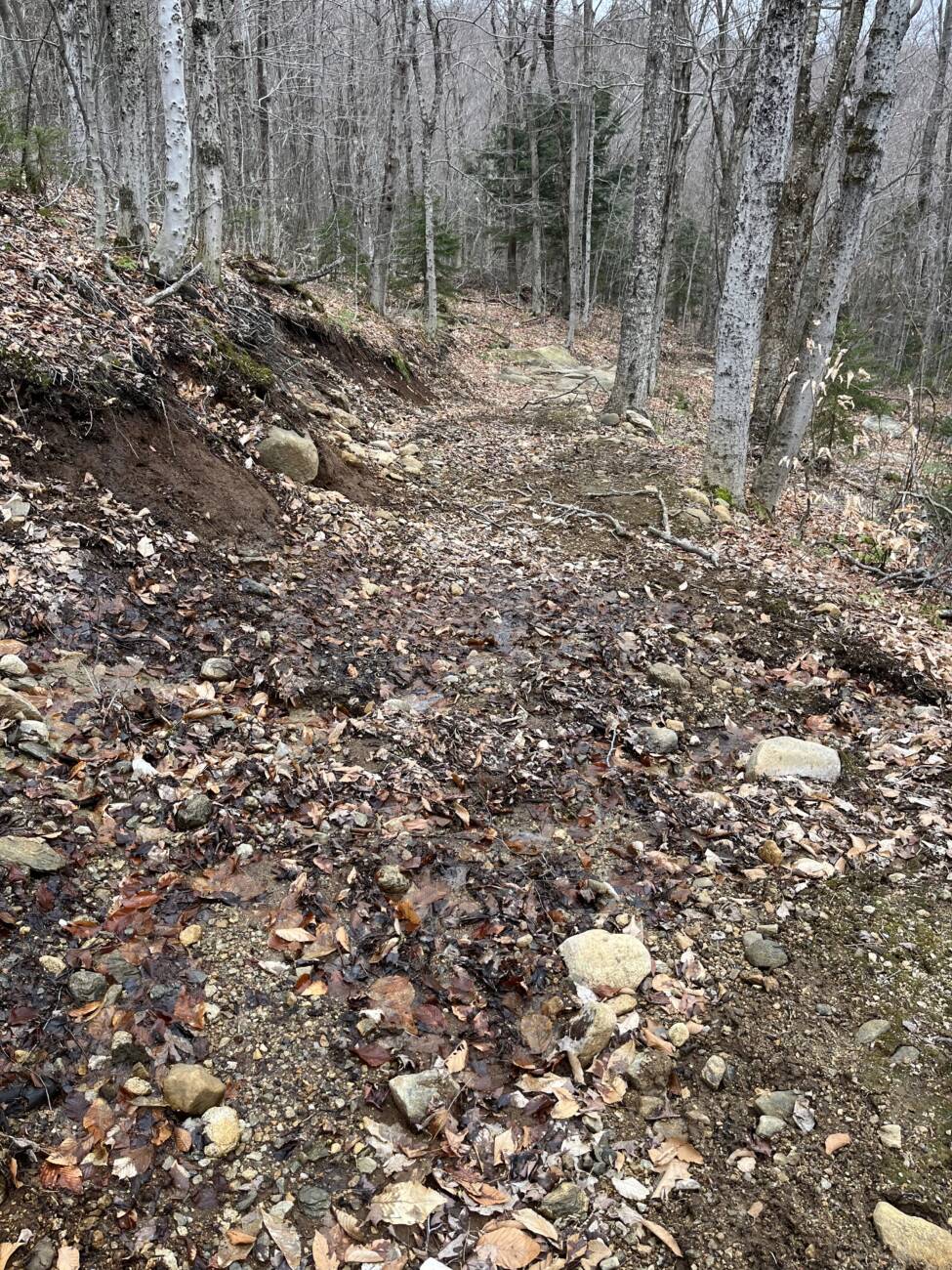

Once the team has an idea of the work that needs to be done we start with a our first clean up of each trail. We start by leaf-blowing each trail to get the bulk of the leaves that fell after we closed the park last October. Once we’ve gone through and leaf-blown a trail, the team will go back over the trail with rakes to remove any stubborn leaves as well as any rocks that loosened up over the winter.
Bike trails, and berms, in particular, are built like a cake. We have a base layer that is usually comprised of larger rocks and boulders. We then have a second layer that consists of smaller rocks and dirt to fill in the crevices. The icing on top is the smooth surface that we all love to ride on that consists of a secret blend of sand, clay, some mineral soil, as well as very small rocks and pebbles.
Over time weather and riders will loosen up rocks and pebbles from our “first and second layers” and the trail crew needs to go in and remove them. During the spring as the ground freezes and thaws, more of these smaller rocks will work their way to the surface and become dislodged. The team gently rakes every bit of trail to remove anything that is loose but they’ll leave behind all rocks that are still firmly intact. These rocks/leaves/debris are raked into piles and removed from the trail.
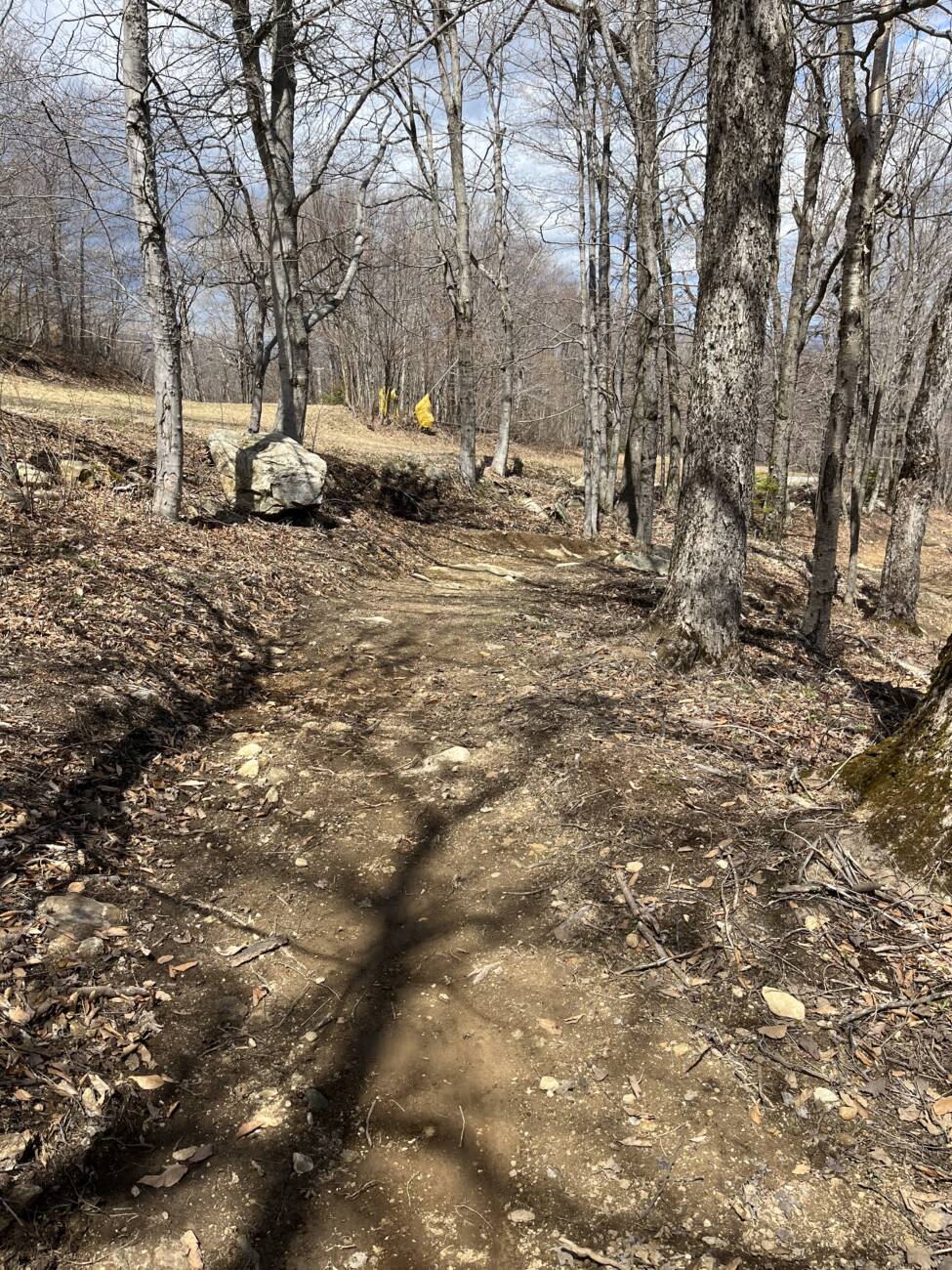
Once we’ve given the trail a nice comb-through, we go back and get to work addressing any major issues. This usually involves adding additional drainage to ensure water is flowing across or under the trails instead of along them. We use a few different techniques for this, from drainage knicks to rolling grade dips, to installing drainage pipes.

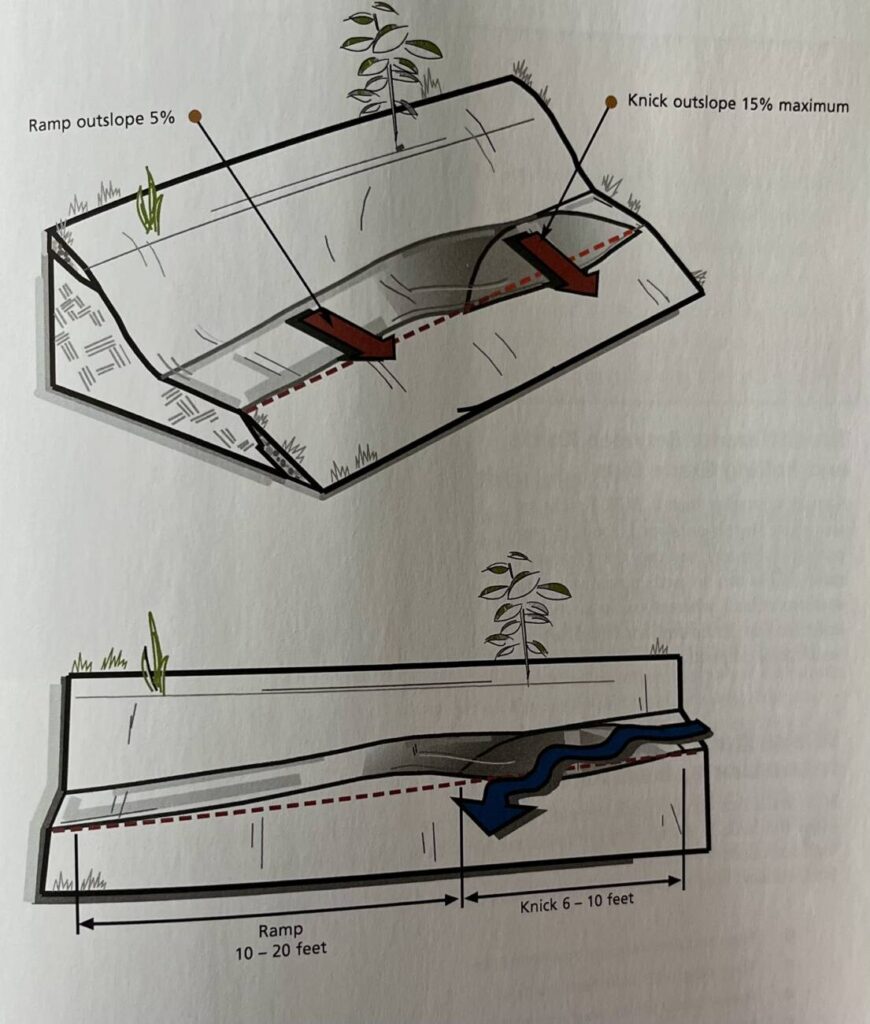
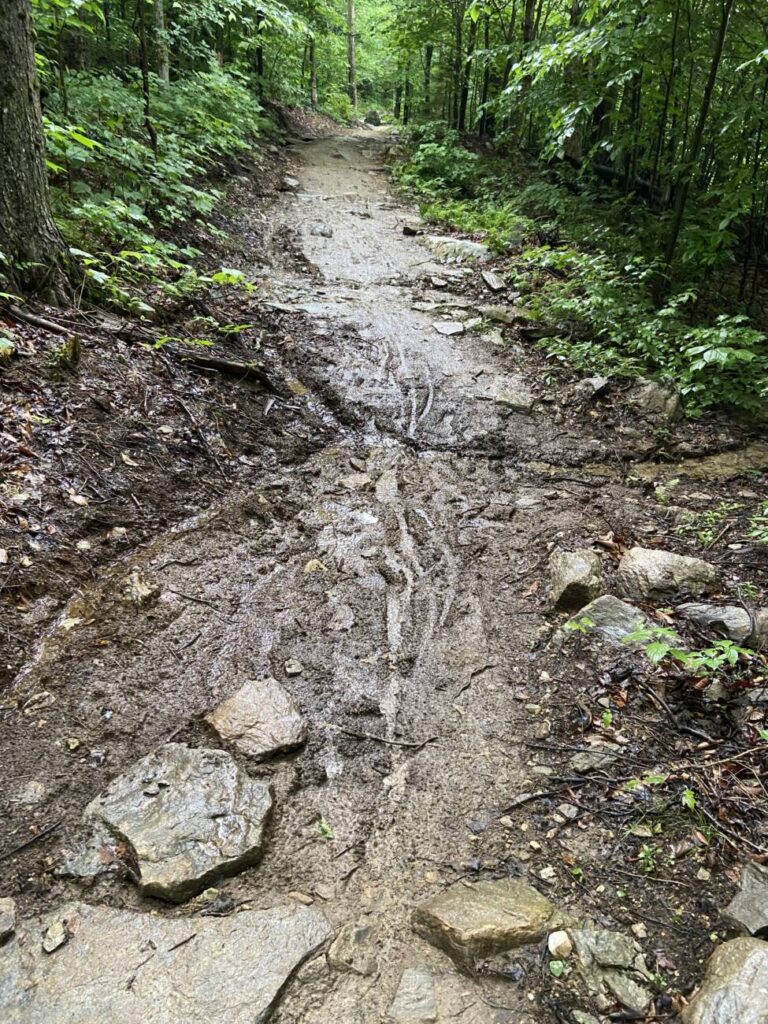
As you can see, this area of Trail Forest One had a lot of water flowing across and down the trail creating a surface that is soft and muddy. Over time this has resulted in some of our “icing” washing away, leaving behind our “first and second layers” of rocks that makes the riding surface bumpier and harder to maintain rolling speed.
The team has been working hard to install some additional drainage pipes along this section so that water will flow underneath the trail, leaving the surface intact.
Below you’ll see the step by step photos of the repair process. First we will dig a trench low and long enough to fit a pipe that will sit below the riding surface. Those of you who have ever tried to dig a hole in the state of Vermont know just how rocky the soil is. It’s no easy feat for the team to dig these trenches. Once we’ve dug the trench it’s time to add the pipe. Our trail crew will often reuse smaller pieces of snowmaking pipes that have been replaced by our snowmaking team. Once the pipe is installed, we’ll add smaller rocks around the pipe to help hold it in place and then cover the entire thing with a little bit of the second layer of the cake and then some frosting.
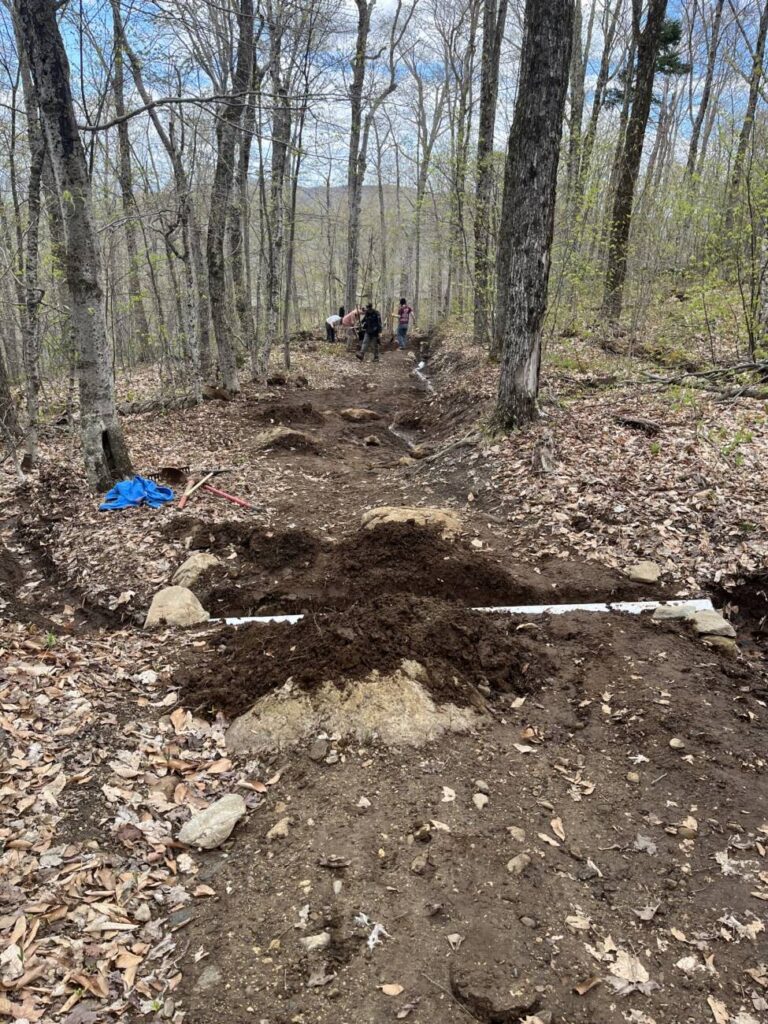
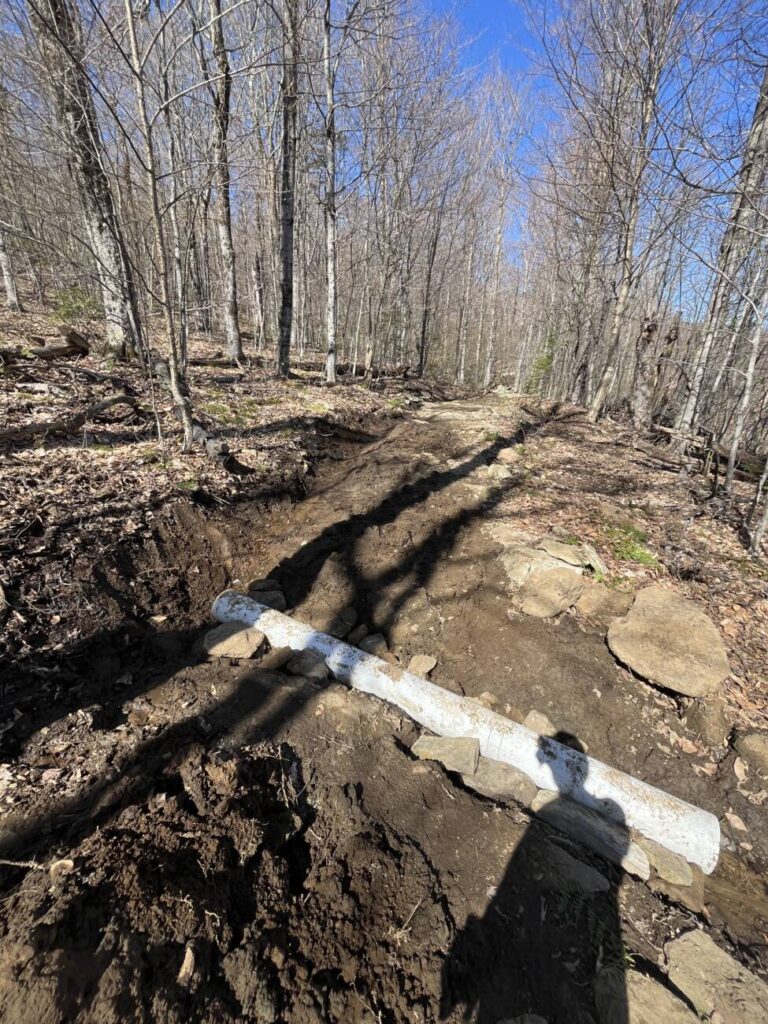

While drainage may not be the most exciting thing, the impact these improvements have on our trails goes a long way. You may not notice the work that goes into this but you would definitely notice these areas if they didn’t do the work.
Check out this before and after of a particularly wet section of Gravitas.

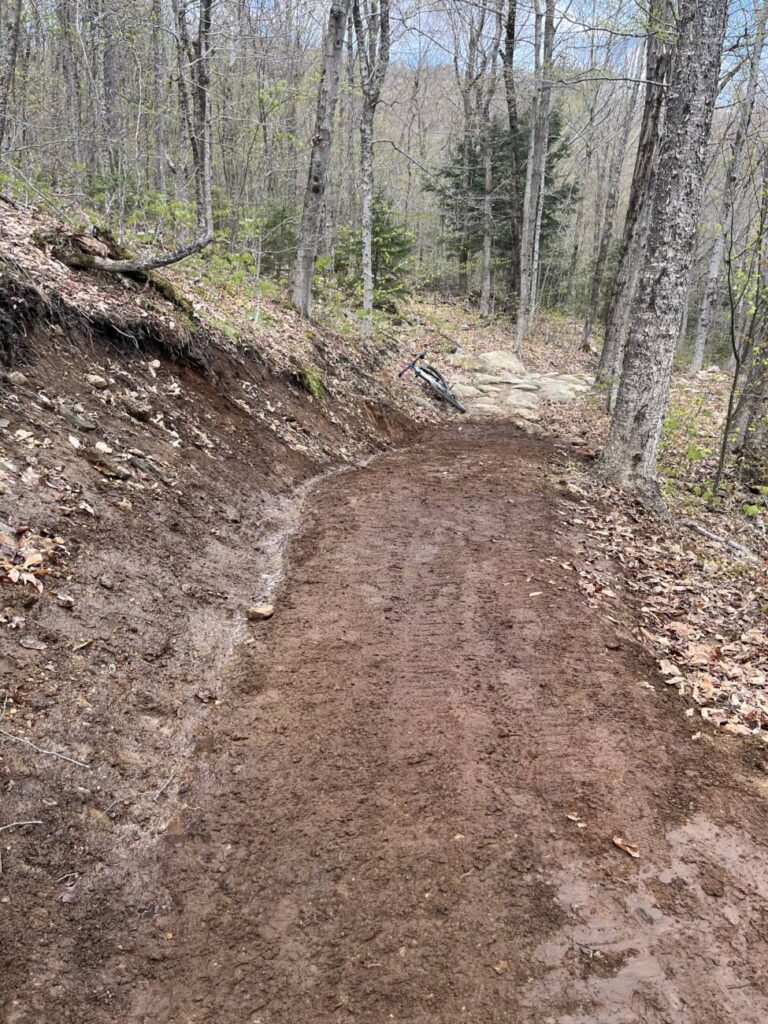
With all of the water mitigation completed, the trails will quickly start to dry out. As we wait for the right soil moisture that will compact we turn our attention toward tuning up berms, rollers, and jumps. Over time, shaped berms will start to slump and need to be reshaped. Reshaping berms involves shaving the extra slumped material from the bottom of the berm and bringing it back to the top. The ideal berm shape will get steeper as it goes up until it’s almost vertical at the very top. Once the berm has been reshaped, the last step is to repack it with a flat shovel.
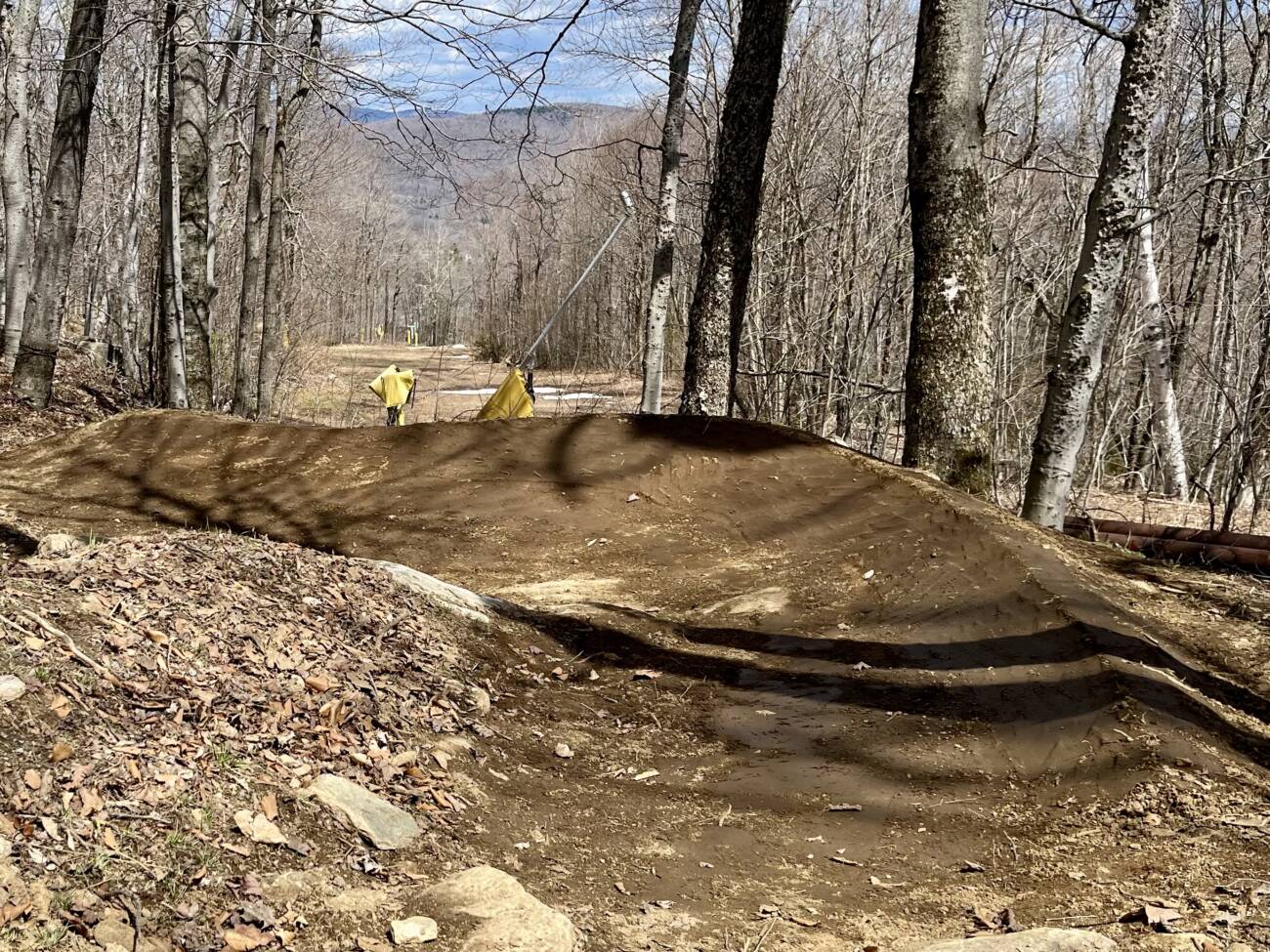
Moving on to our next steps, we’ve cleaned up the trail, we’ve addressed any major drainage issues, we’ve reshaped berms, and now we’ll work on resurfacing sections of the trail that eroded in the off-season. This process involves bringing in a special mix of the “frosting” dirt and transporting it all over the bike park. Think of our trail crew as highway department workers, moving around and patching the potholes. This year we’ll be able to resurface sections of trails much more efficiently thanks in part to our new MukTruk powered wheelbarrow. Below you’ll find some photos of the crew resurfacing.
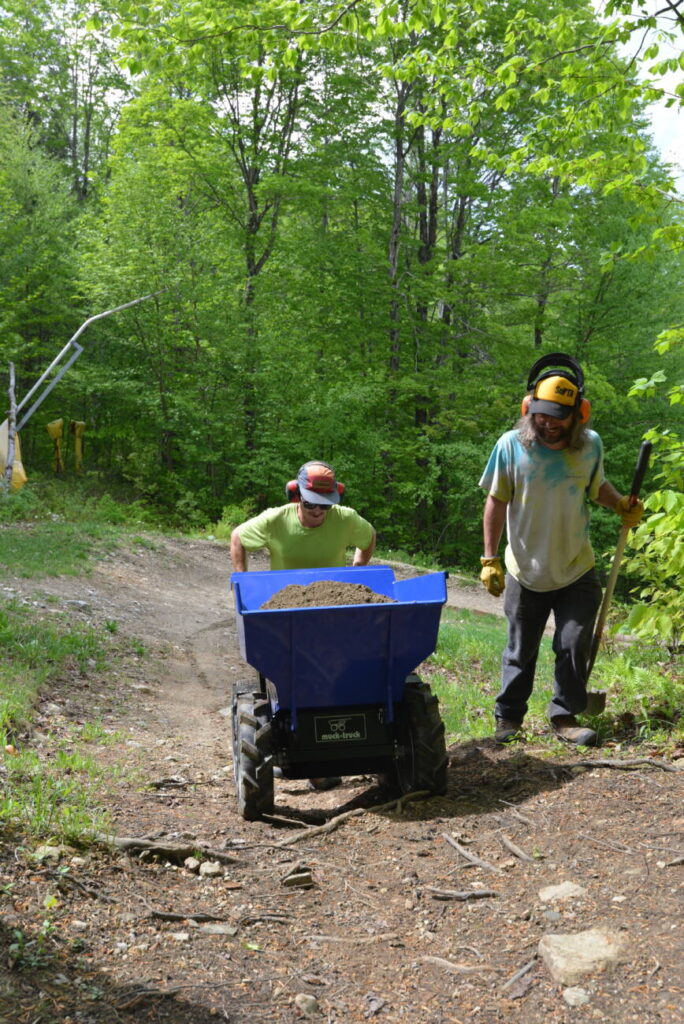
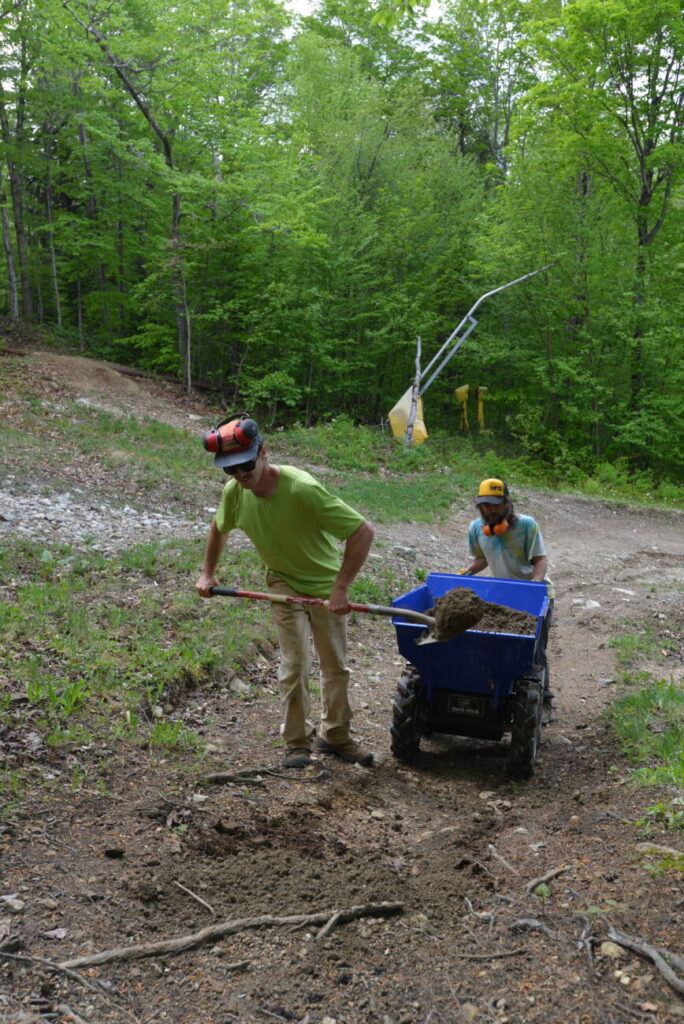

With all the prep work done, it’s time to speed up the repacking process before tires even hit the dirt. With the use of a plate compactor, we’re able to pack the trails to create a smooth riding surface that will stay intact with the amount of usage that we see throughout the summer. Compacting a trail will also allow water to flow along the surface without sinking into “the cake” which would result in soft/muddy spots. This same level of compaction can happen with a lot of riders as well, but using the compactor will give us an even better starting point when we open for the season.
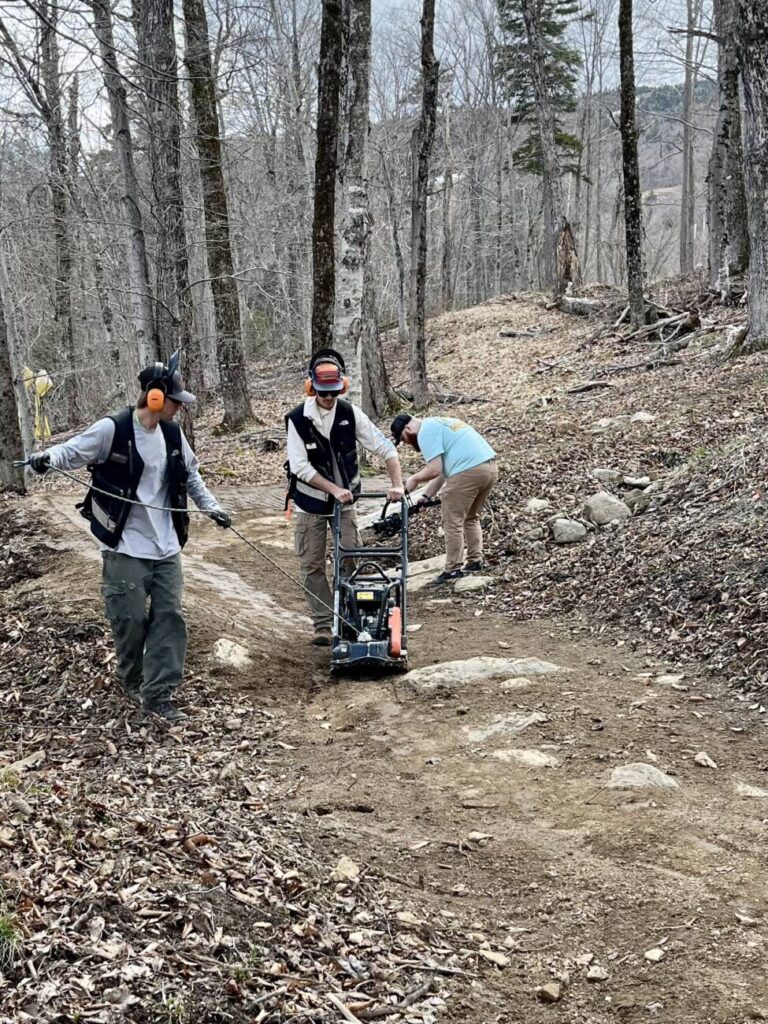

The final results are amazing trails ready to welcome you all to another great season. Take a look at some finished trail photos below and get excited to come ride with us!
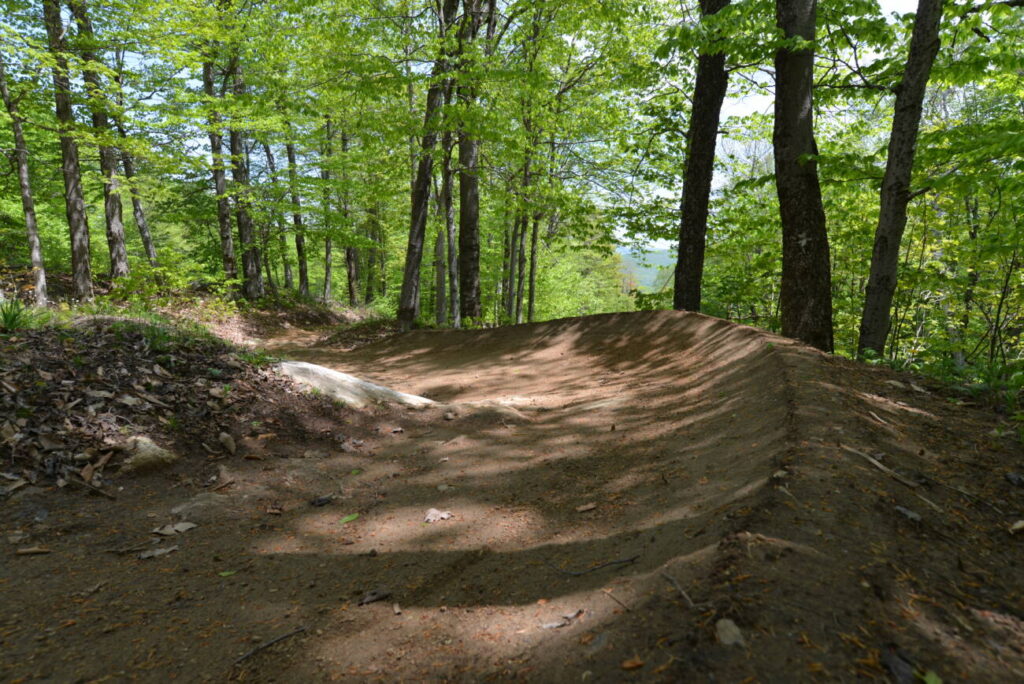


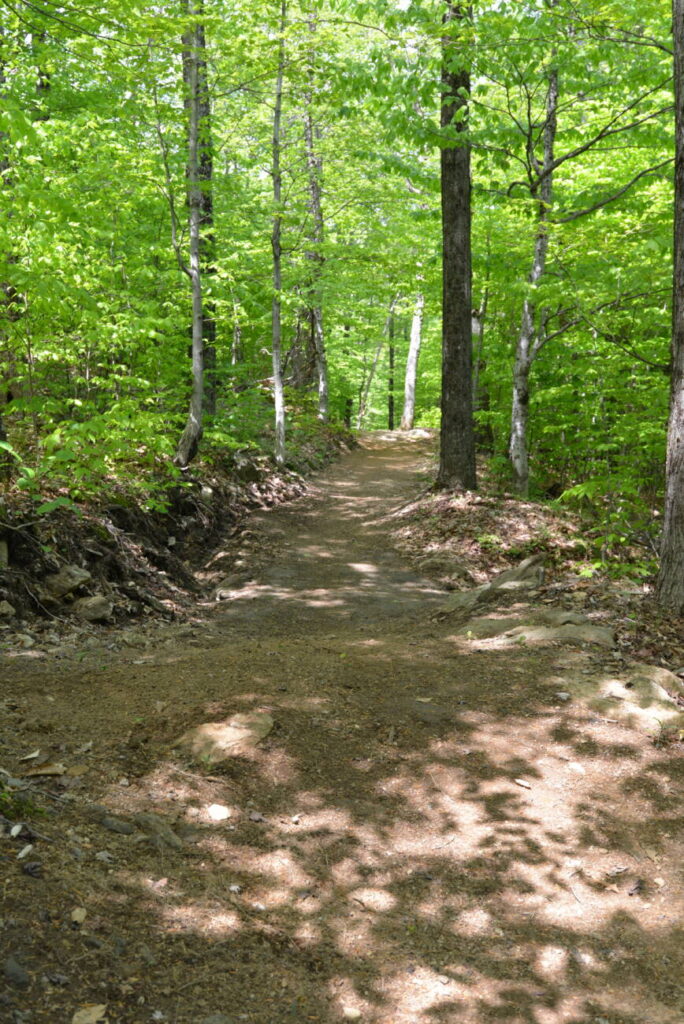

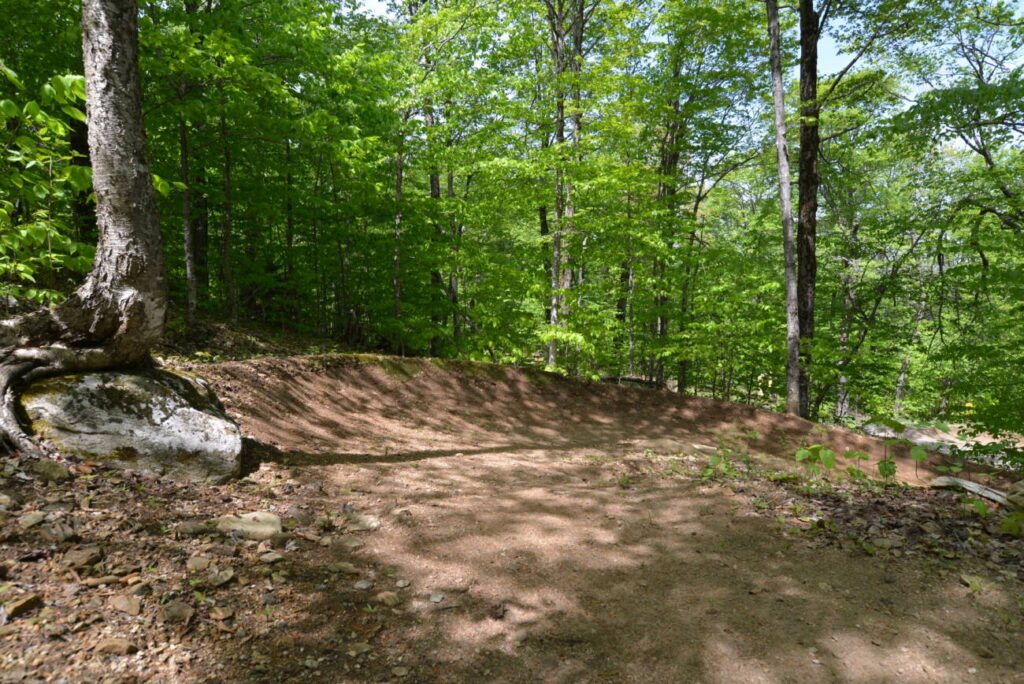
As you can see, it takes a lot of work to get our trails ready for mountain bike season. This truly is a labor of love for our trail crew and they’re so excited for you to come and ride and see all of the work they’ve done!
If you see our trail crew out on the mountain be sure to stop and say thanks! On behalf of the trail crew (pictured L to R: Keegan, Noel, Jeff, Riley), we can’t wait to welcome you back to another great season at Stratton Bike Park! We look forward to riding with you all soon!
Speaking of riding with us, have you checked out our first blog post of the season? What’s New at Stratton Bike Park?
And for even more Stratton Bike Park content, be sure to follow us on Instagram! https://www.instagram.com/strattonparks/

